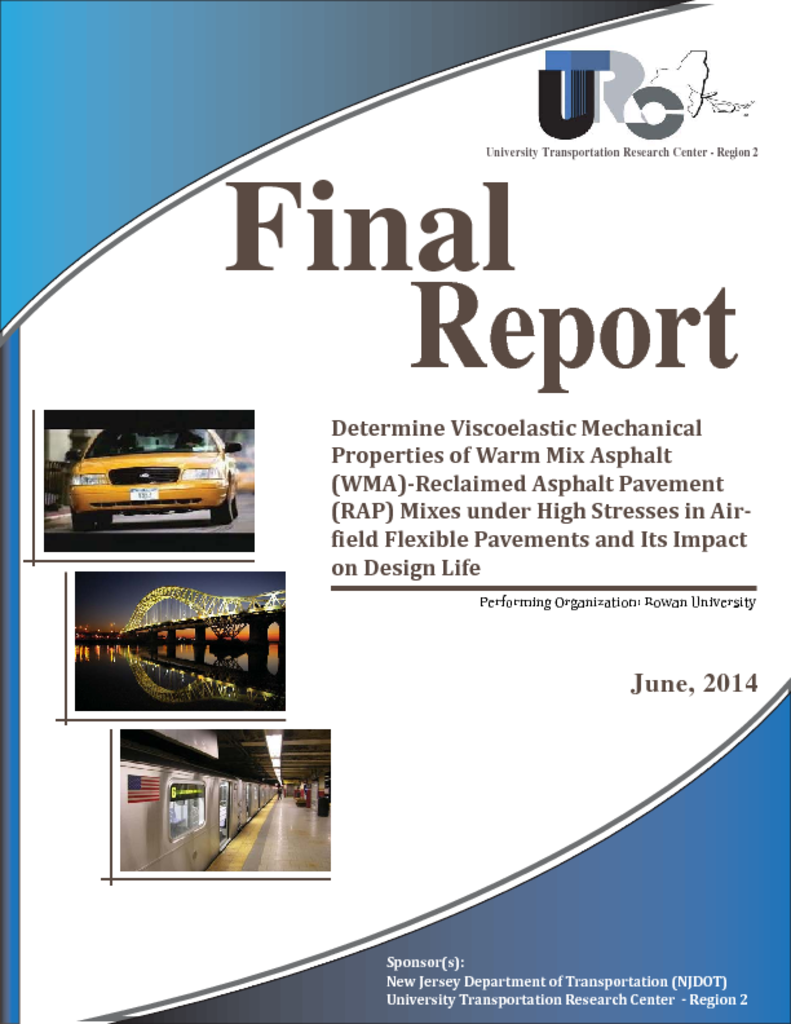The introduction of larger aircrafts on flexible airfield pavements has led to a need for asphalt mixtures capable of sustaining such heavy loads. This laboratory and analytical study investigated the mechanical responses of a number of modified asphalt mixtures to identify their potential for use in airfield aprons and taxiways that are subjected to heavy, static or slow-moving aircraft loads. The mixtures analyzed in this study consisted of a P-401 mixture (used as baseline); a warm mix asphalt (WMA) with 35% reclaimed asphalt pavement (RAP) added to the aggregate portion; a SMA mixture; two HMA mixtures with two different modified binder grades (PG82- 22 and PG70-22); a dense-graded asphalt (DGA) mixture; and a BRIC mixture. The airfield flexible pavement section constructed at the Federal Aviation Administration’s (FAA) National Airport Pavement Test Facility Construction Cycle – 1 was modeled using the three-dimensional finite element analysis (FEA) software ABAQUS™. Laboratory-compacted specimens of each modified asphalt mixture were tested using AASHTO standards to determine volumetric properties and mechanical responses. The effects of static and dynamic aircraft loading were evaluated in ABAQUS™ using the material properties of the mixtures determined in the laboratory. Flow time and overlay tester results were found to be closely related to the performance of the modified asphalt mixtures. Higher flow time values resulted in lower stresses and deflections in the asphalt surface course. Higher cycles to failure resulted in lower tensile strains at the bottom of the surface course. The rutting performance of all mixtures analyzed in this study, except for HMA PG70-22 and DGA mixtures was comparable to the performance of the baseline (FAA P-401) mixture. Based on the overlay test results, it was found that all of the mixtures analyzed in this study, except for the SMA, exceeded the minimum threshold value and might be comparable to the baseline (FAA P-401) mixture. Based on the findings of this study, it appears that a number of mixtures more commonly used in highway pavements, including modified mixtures, warm mix asphalt, and reclaimed asphalt pavement perform similarly to or even outperform the FAA standard asphalt mixture. The results of this initial study support the idea that an opportunity exists for airports to implement emerging asphalt paving materials without compromising the pavement design life.


